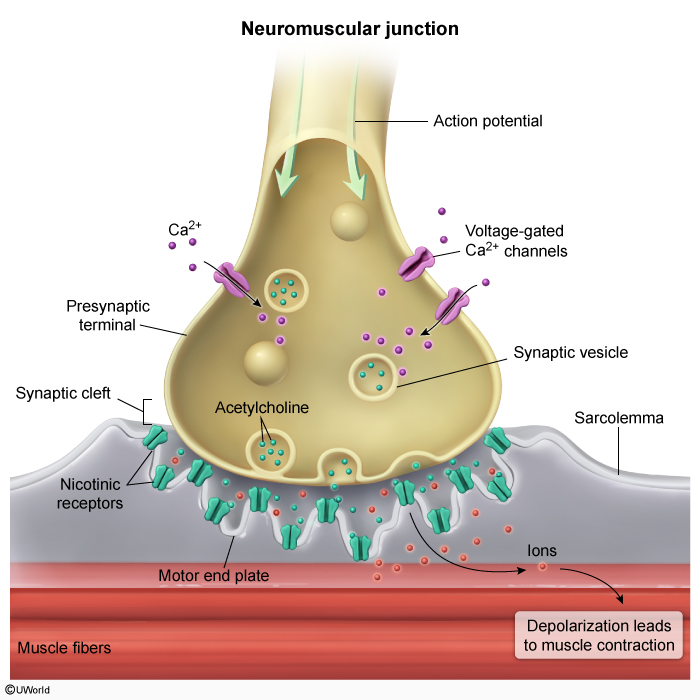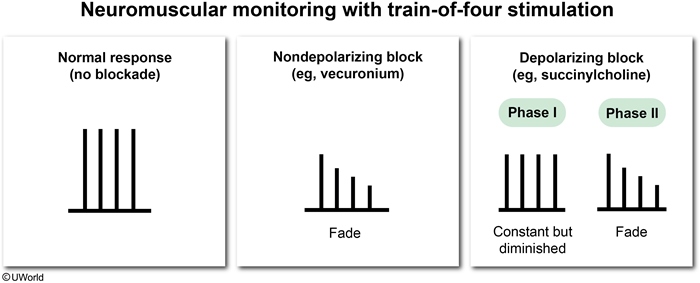Skeletal Muscle Relaxants: Neuromuscular Blocking Agents
Article Sections
Introduction
Neuromuscular blocking agents (NMBAs) are medications that cause complete skeletal muscle paralysis by targeting nicotinic acetylcholine receptors at the neuromuscular junction. NMBAs are classified as either depolarizing or nondepolarizing based on their mechanism of action. These medications are used most often to facilitate intubation, provide muscle relaxation during surgery, or enable prolonged mechanical ventilation.
Neuromuscular junction physiology
The neuromuscular junction consists of the presynaptic motor neuron terminal, synaptic cleft, and postsynaptic motor endplate, which contains nicotinic acetylcholine receptors. When an action potential reaches the presynaptic motor neuron terminal, it triggers the release of acetylcholine (ACh) into the synaptic cleft. Acetylcholine then binds to the postsynaptic nicotinic acetylcholine receptors on the motor endplate, leading to the depolarization of the myocyte membrane and causing muscle contraction (
Continue Learning with UWorld
Get the full Skeletal Muscle Relaxants: Neuromuscular Blocking Agents article plus rich visuals, real-world cases, and in-depth insights from medical experts, all available through the UWorld Medical Library.
Figures

